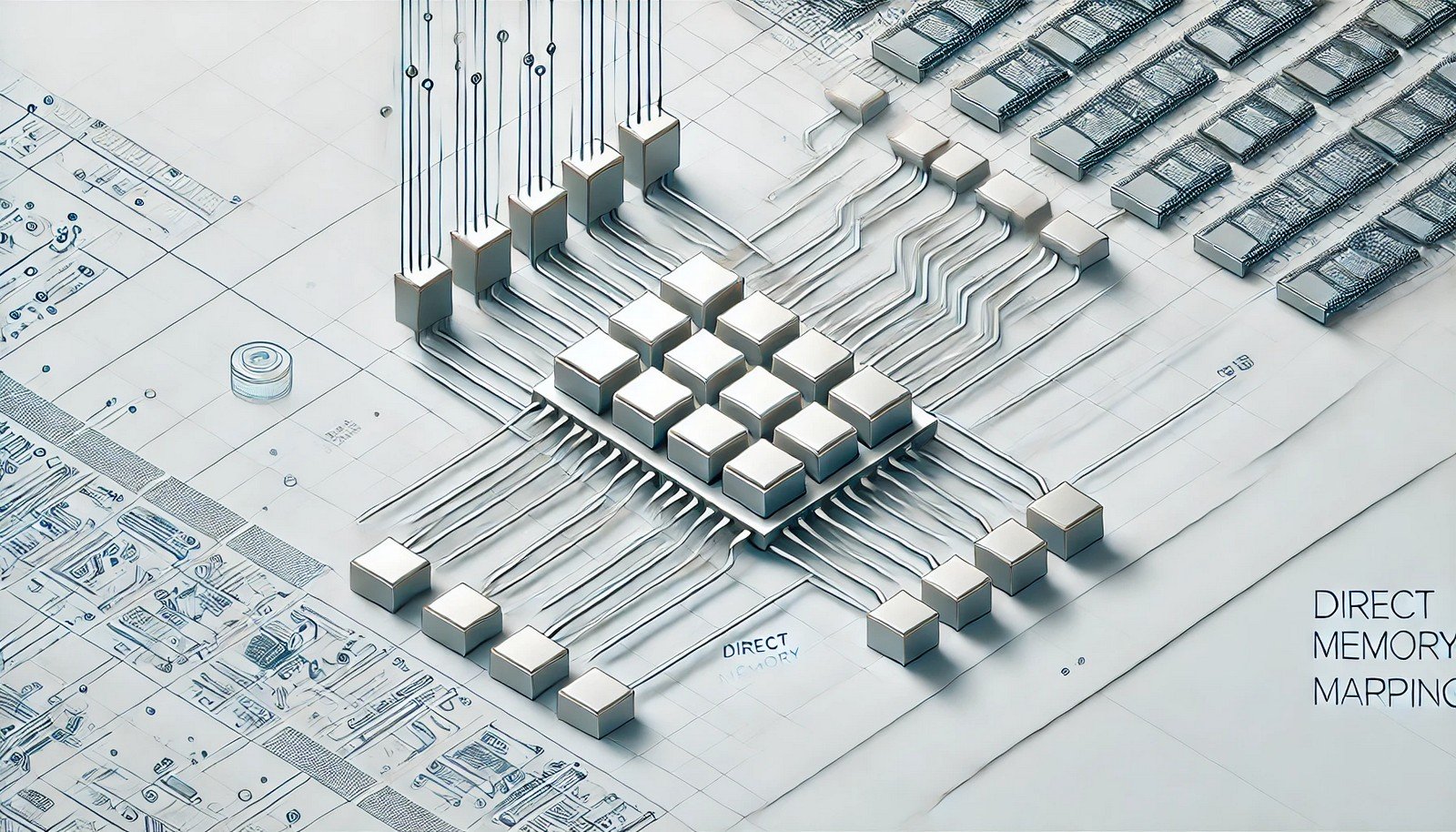Direct Memory Mapping
 (Representational Image | Source: Dall-E)
(Representational Image | Source: Dall-E)
Quick Navigation:
- Direct Memory Mapping Definition
- Direct Memory Mapping Explained Easy
- Direct Memory Mapping Origin
- Direct Memory Mapping Etymology
- Direct Memory Mapping Usage Trends
- Direct Memory Mapping Usage
- Direct Memory Mapping Examples in Context
- Direct Memory Mapping FAQ
- Direct Memory Mapping Related Words
Direct Memory Mapping Definition
Direct Memory Mapping (DMM) is a technique that allows a system to map files or hardware resources directly into memory. This provides high-speed access without requiring multiple data copies. It enables applications to interact with large data sets efficiently by treating them as if they were part of the process’s memory space. Commonly used in operating systems and embedded systems, DMM is crucial for memory management and performance optimization.
Direct Memory Mapping Explained Easy
Imagine you have a really big book, and instead of copying pages to read them, you can just point at any page instantly. Direct Memory Mapping works the same way: it lets a computer use large amounts of data without needing to copy it, making everything much faster.
Direct Memory Mapping Origin
The concept of Direct Memory Mapping dates back to early computer architectures, where memory efficiency was crucial. As operating systems evolved, DMM became widely used in UNIX-based and modern OS environments to optimize performance.
Direct Memory Mapping Etymology
The term "Direct Memory Mapping" comes from the idea of "mapping," which refers to creating a direct link between memory locations and external resources like files or hardware, eliminating the need for redundant copying.
Direct Memory Mapping Usage Trends
DMM has grown in popularity with the rise of high-performance computing, big data applications, and real-time systems. It is heavily used in database management, embedded systems, and networking applications, where efficiency and speed are critical.
Direct Memory Mapping Usage
- Formal/Technical Tagging:
- Operating Systems
- Memory Management
- High-Performance Computing - Typical Collocations:
- "memory-mapped files"
- "direct memory access"
- "DMM-enabled application"
- "efficient memory allocation"
Direct Memory Mapping Examples in Context
- Operating systems use direct memory mapping to handle large files efficiently without excessive copying.
- Databases employ DMM for fast access to large data sets, improving query performance.
- Graphics processing units (GPUs) leverage direct memory mapping for high-speed rendering operations.
Direct Memory Mapping FAQ
- What is Direct Memory Mapping?
Direct Memory Mapping is a method where files or hardware are mapped into the process’s memory space for efficient access. - How does Direct Memory Mapping improve performance?
It eliminates redundant data copies, reducing overhead and improving speed. - Where is Direct Memory Mapping used?
It is used in OS memory management, databases, embedded systems, and high-performance computing. - How is Direct Memory Mapping different from traditional file access?
Traditional file access requires reading and writing operations, whereas DMM allows direct memory interaction. - What are the advantages of Direct Memory Mapping?
Faster file access, reduced CPU overhead, and efficient memory usage. - Does Direct Memory Mapping work with all file types?
It primarily works with structured file formats and system resources optimized for direct access. - Is Direct Memory Mapping secure?
While efficient, it requires strict access control to prevent security vulnerabilities. - Can Direct Memory Mapping be used in networking?
Yes, it helps optimize packet processing and high-speed data transfers. - How does Direct Memory Mapping relate to virtual memory?
It is often used alongside virtual memory for efficient address space management. - What programming languages support Direct Memory Mapping?
Languages like C, C++, and Python (via memory-mapped files) support DMM.
Direct Memory Mapping Related Words
- Categories/Topics:
- Operating Systems
- Embedded Systems
- Virtual Memory
Did you know?
Direct Memory Mapping plays a key role in game development, allowing fast texture loading and rendering, which is essential for smooth gaming experiences.
PicDictionary.com is an online dictionary in pictures. If you have questions or suggestions, please reach out to us on WhatsApp or Twitter.Authors | Arjun Vishnu | @ArjunAndVishnu

I am Vishnu. I like AI, Linux, Single Board Computers, and Cloud Computing. I create the web & video content, and I also write for popular websites.
My younger brother, Arjun handles image & video editing. Together, we run a YouTube Channel that's focused on reviewing gadgets and explaining technology.



Comments powered by CComment